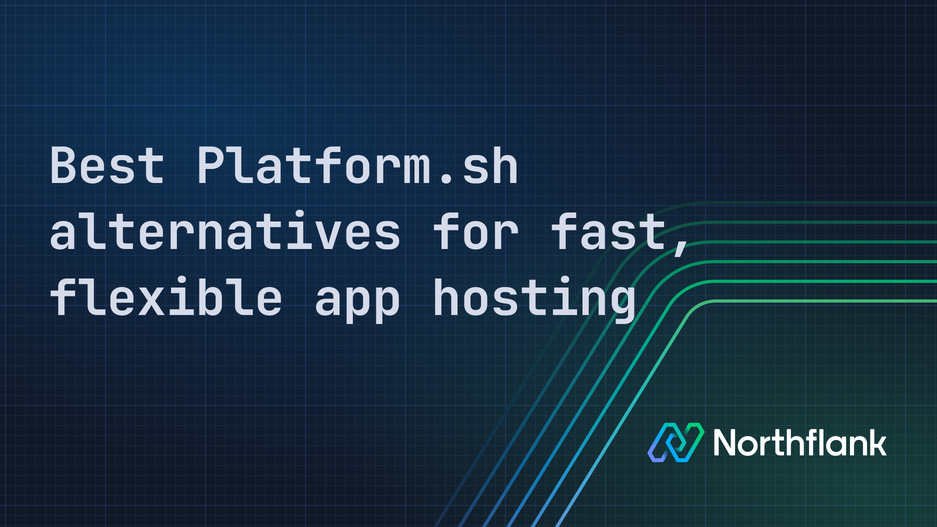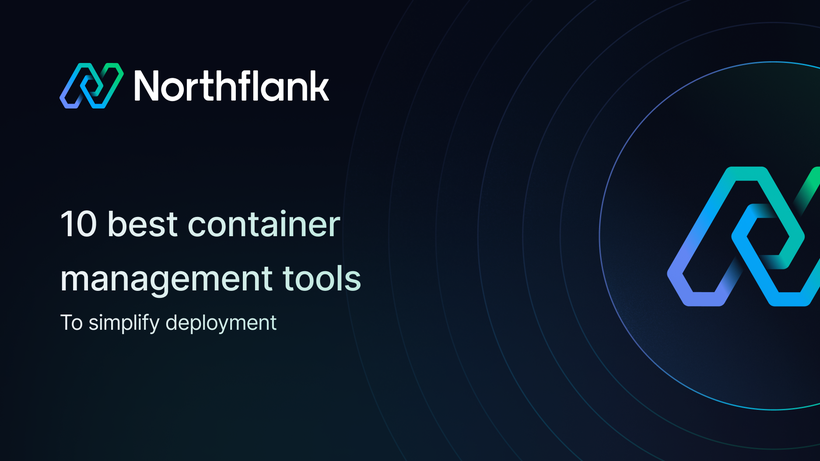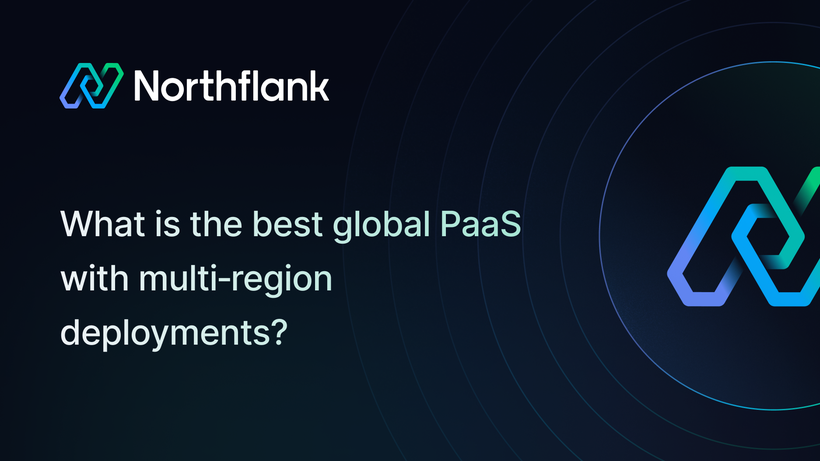

The best Platform.sh alternatives for fast, flexible app hosting
If you’ve worked with Platform.sh, you probably know what makes it appealing — a reliable platform that combines app hosting, infrastructure management, and Git-driven deployment workflows in one place. It’s well-regarded for its multi-service support, cloning environments from Git branches, and managing infrastructure complexity so developers don’t have to.
But like any platform, it isn’t perfect for everyone. Maybe you’re starting to feel the limits around flexibility. Or the pricing isn’t scaling well with your needs. Or you’re curious if newer, faster, more developer-friendly options exist — ones that better fit today’s workflows and tech stacks.
If that sounds like you, this guide is for you.
If you don’t have time to dive deep, here’s a quick comparison of how Platform.sh stacks up against other hosting platforms in the areas that matter most:
| Feature / Platform | Platform.sh | Northflank | Render | Railway | Fly.io | DigitalOcean App Platform |
|---|---|---|---|---|---|---|
| Architecture Style | Git-driven, proprietary environments | Container-native, microservices-friendly | App & static hosting, Docker-based | Simple apps & databases | Global edge-deployed containers | PaaS for apps & static sites |
| Supports Containers | Limited (through buildpacks) | ✅ Full Docker support | ✅ Docker-based | ⚠️ Basic support | ✅ Full Docker-native | ⚠️ Limited (via buildpacks or container images) |
| Multi-Service / Microservices | ✅ Supported | ✅ First-class microservices support | ⚠️ Limited | ⚠️ Limited | ✅ Excellent (edge-distributed) | ⚠️ Limited multi-service support |
| Bring Your Own Cloud (BYOC) | ❌ Not supported | ✅ Supports AWS, Azure, GCP, etc. | ❌ Not supported | ❌ Not supported | ❌ Not supported | ❌ Not supported |
| Built-in CI/CD | ✅ Git-based, proprietary | ✅ Integrated Git CI/CD & Preview Envs | ✅ Git-based | ✅ Git deploys | ⚠️ Manual / limited | ✅ Git-based CI/CD |
| Managed Databases | ✅ PostgreSQL, MariaDB, Redis, MongoDB | ✅ PostgreSQL, MongoDB, Redis, more | ✅ PostgreSQL, Redis | ✅ PostgreSQL, Redis | ✅ LiteFS, SQLite, external DBs | ✅ PostgreSQL, MySQL, Redis |
| Preview Environments | ✅ Git branch-based | ✅ Per-branch deploy previews | ✅ Available | ✅ Simple preview environments | ⚠️ More manual | ⚠️ Limited / only for Pro tier |
| Pricing Transparency | ⚠️ Can be complex, scales up quickly | ✅ Transparent, fair pricing tiers | ✅ Clear and affordable | ✅ Pay-as-you-go | ✅ Pay-as-you-go | ✅ Transparent tiered pricing |
| Ease of Use / Dev Experience | ⚠️ Steeper learning curve | ✅ Modern, Developer-friendly, intuitive UI & CLI | ✅ Developer-friendly | ✅ Beginner-friendly | ⚠️ Requires infra knowledge | ✅ Simple, polished UI |
| Edge Hosting / Global Deploy | ⚠️ Limited | ✅ Available | ⚠️ Limited | ⚠️ Limited | ✅ Built for edge | ⚠️ Regional deploys only |
| Best For | Complex enterprise apps, tightly coupled stacks | APIs, microservices, SaaS apps, Docker-first projects | Web apps, APIs, simple services | Side projects, MVPs, indie SaaS | Real-time, global-first apps | Simple apps, startups, DigitalOcean fans |
Where Platform.sh works well — and where it struggles
Platform.sh shines in a few key areas, especially for teams working with complex, tightly coupled applications. It’s particularly well-suited for projects that:
- Need built-in support for multiple services like PostgreSQL, Redis, MongoDB, and more.
- Rely on Git-driven workflows, where every branch can instantly spin up its own environment — perfect for staging, testing, and QA.
- Value having infrastructure and hosting managed together under a single platform, with less day-to-day DevOps overhead.
- Support enterprise apps with strict infrastructure policies, compliance needs, or legacy requirements that benefit from Platform.sh’s managed services and structured workflow.
It’s a solid choice for larger teams working in established ecosystems where consistency, predictability, and managed infrastructure take priority over bleeding-edge flexibility.
Where Platform.sh struggles
As good as it is for certain use cases, Platform.sh starts to feel limiting when your needs shift towards modern, containerized, microservices-driven architectures — or when your budget and workflows demand something leaner and faster.
Here’s where it tends to fall short:
- Flexibility is limited. You’re often working within proprietary build and deployment processes that don’t integrate cleanly with external CI/CD systems, container registries, or cloud services.
- Container and microservices support feels bolted on. While you can run multiple services, it’s not a native container-first platform — Docker support is limited, and multi-service orchestration lacks the simplicity found in newer platforms.
- Pricing can escalate quickly. As you add more services, environments, or databases, costs can balloon in a way that’s not always transparent or predictable.
- Developer experience feels a little dated. Compared to newer platforms with intuitive UIs, modern CLIs, and seamless environment management, Platform.sh can feel clunky and harder to adopt, especially for newer teams or fast-moving projects.
- Vendor lock-in is real. Moving your infrastructure, databases, and services outside of Platform.sh’s ecosystem can be painful, making scaling or migrating to other platforms more difficult down the road.
If your team’s tech stack is moving towards containers, microservices, APIs, and lightweight, cloud-native services— or if you need to control infrastructure more closely while keeping the developer experience frictionless — you’ll likely start feeling these limitations.
When you're weighing alternatives, you’re not just chasing hype — you’re after something that actually makes your workflow better. Here’s what that looks like:
- Feels fast and intuitive to work with — from the first
git pushto a live deploy, it should feel effortless. Clean docs, a sane CLI, good defaults, and a dashboard you don’t dread opening. - Supports the tech stacks and architectures you actually use — whether you’re running containers, microservices, databases, background workers, or static sites. A good platform should fit into your existing stack, not force you to rebuild it.
- Gives you flexibility without burying you in DevOps work — you should be able to tweak infrastructure when you need to, but not get stuck managing YAML forests or debugging obscure pipeline errors at midnight.
- Offers predictable pricing that scales fairly with your usage — no surprises, no unpredictable overages, and pricing models that make sense whether you’re a solo developer or running production workloads for a growing team.
- Supports modern CI/CD workflows, preview environments, and instant rollbacks — because shipping fast (and safely) is non-negotiable in 2025. Your tools should help you iterate confidently, not hold you back.
The best Platform.sh alternatives in 2025
Let’s go through some of the strongest alternatives — and where each one shines.
Northflank is a platform that enables developers to build, deploy, and scale applications, services, databases, and jobs on any cloud through a self-service approach. For DevOps and platform teams, Northflank provides a powerful abstraction layer over Kubernetes, enabling templated, standardized production releases with intelligent defaults while maintaining necessary configurability.

Key features:
- Kubernetes-powered, full-stack platform
- Deploy containers, databases, and scheduled jobs
- Bring your own cloud (AWS, GCP, Azure, etc.)
- CI/CD integration, real-time logs, with a developer-friendly and consistent experience across UI, CLI, API, and GitOps
- GPU support for AI workloads
- Automatic preview environments and seamless promotion to dev, staging, and production
Best for:
- Dev teams building APIs, microservices, and containerized web apps
- SaaS products needing multi-service architectures
- Teams looking for a fast, clean alternative to older, more rigid PaaS platforms
Limitations:
- Highly experienced DevOps teams might find it restrictive compared to directly managing raw Kubernetes clusters. It’s a fine balance between ease of use, flexibility, and customization; that line differs for every organization.
See how Weights company uses Northflank to scale to millions of users without a DevOps team
Render is a modern cloud platform that streamlines the hosting of web applications, static sites, APIs, and databases, providing automatic SSL certification and CDN integration.

Key features:
- Zero-downtime deployments
- Automatic HTTPS and DDoS protection
- Native SSD storage
- Pull request preview environments
- Custom domain support
Best for:
Teams that need a clean, reliable platform without dealing with infrastructure.
Limitations:
Less flexibility for multi-service, microservices, or containerized apps compared to Northflank.
For a closer look at how Fly compares to other platforms, this article offers a well-rounded analysis.
Railway excels at simple, fast app deployments with built-in databases and auto-generated environments. Its UI is clean, intuitive, and geared towards indie developers, hackers, and small SaaS projects.

Best for:
Rapid MVPs, hackathons, and indie SaaS products.
Limitations:
Limited fine-tuning for advanced multi-service projects or heavy containerized workloads.
For a closer look at how Fly compares to other platforms, this article offers a well-rounded analysis.
4. Fly.io
Fly.io is a globally distributed application platform that positions your code closer to users, delivering exceptional performance without the complexity of traditional infrastructure management.

Key features:
- Intelligent global load balancing
- Integrated Postgres and Redis support
- Native IPv6 compatibility
- Docker-based deployment pipeline
- Extensive edge network coverage
Best for:
APIs, multiplayer games, real-time apps, or anything with a global audience.
Limitations:
Requires more operational knowledge (Docker, networking, CLI tools) compared to PaaS platforms like Northflank.
For a closer look at how Fly compares to other platforms, this article offers a well-rounded analysis.
DigitalOcean App Platform is a PaaS solution built on DigitalOcean's robust infrastructure, striking an optimal balance between simplicity and control for growing applications.

Key features:
- Integrated CI/CD pipelines
- Automatic vertical and horizontal scaling
- Built-in monitoring and alerting
- Seamless integration with DigitalOcean's managed databases
- Global CDN support
Best for:
Startups, SaaS apps, and dev teams that need a no-nonsense PaaS with modern features.
Limitations:
Less mature in CI/CD automation and multi-service orchestration compared to Northflank.
For a closer look at how Fly compares to other platforms, this article offers a well-rounded analysis.
Selecting the optimal Platform alternative involves a systematic approach:
- Identify your primary challenges: Pinpoint the specific limitations you're experiencing with Platform.sh.
- Prioritize requirements: Create a weighted list of features and capabilities most crucial to your workflows.
- Consider team expertise: Evaluate your team's familiarity with the underlying technologies of each platform.
- Conduct targeted proof of concept: Test your most critical workloads on shortlisted platforms.
- Evaluate total cost of ownership: Look beyond base pricing to include potential savings in developer time and infrastructure optimization.
- Plan for growth: Select a platform that can accommodate your projected scaling needs.
Based on these criteria, Northflank consistently emerges as the superior choice, particularly for teams seeking an optimal balance of power, flexibility, and usability. Its comprehensive feature set addresses common Plaform.sh limitations while providing additional capabilities that enhance productivity and control.
While Platform.sh continues to serve many organizations effectively, the evolving demands of modern development teams often necessitate alternatives with enhanced capabilities. Among the leading contenders, Northflank stands out as the premier option, offering superior deployment flexibility, advanced CI/CD features, and exceptional developer experience without compromising on performance or scalability.
For organizations looking to optimize their cloud deployment strategy, Northflank represents not merely an alternative to Platform.sh, but a significant advancement that can transform application delivery and management. As the PaaS landscape continues to evolve, platforms that successfully combine powerful features with intuitive interfaces—as Northflank does—will continue to lead the market by enabling teams to focus on building great products rather than managing infrastructure.
Ready to make the switch? Try Northflank today and take your deployments to the next level!



